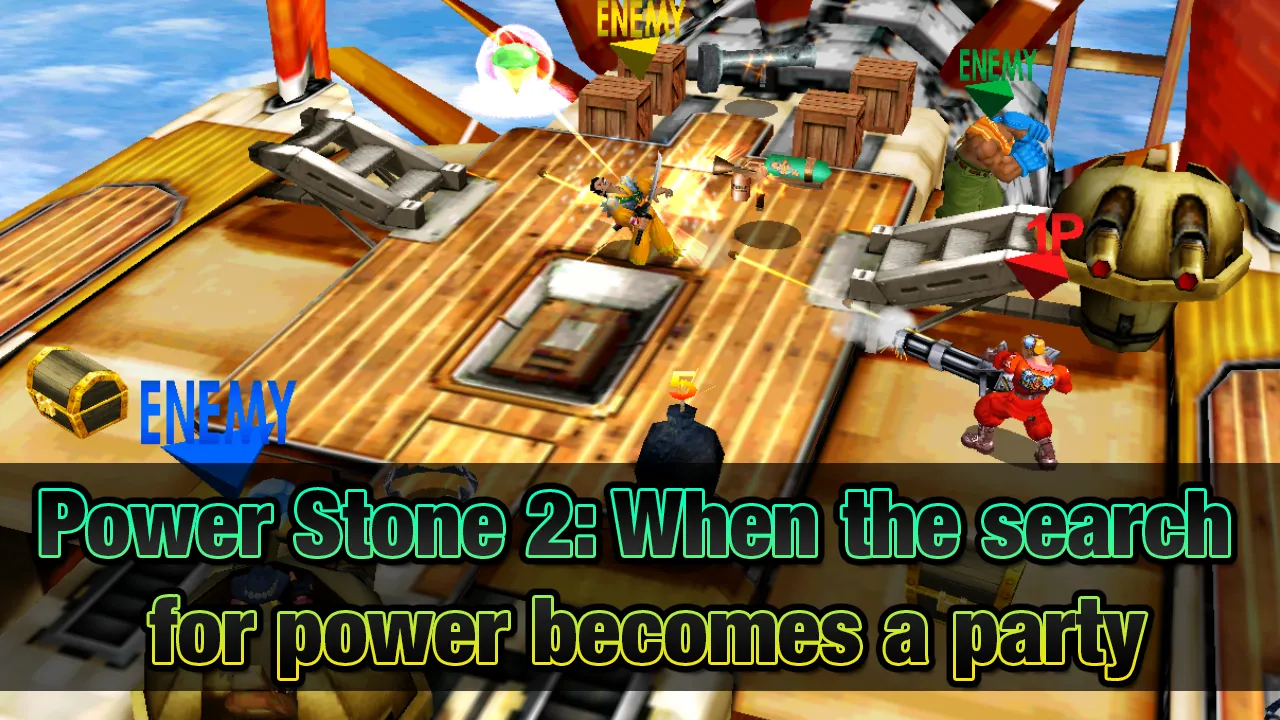

Previously, on my original Power Stone review...
And whenever I get to try it with friends, I will talk about Power Stone 2, which does support four players and overall leans more into that chaos you would expect from that, but has some things that feel lessened becaue of the compromises made for it if compared to this one.
Well, I didn't try it with THREE other pals yet...but one day that I had a chance to try it with someone else after so long, I still took it and played through the whole game with him in co-op.
Oh yeah, you can play in co-op now. Soon you'll see how that works.
Two will survive, two shall fall

In the Arcade mode, whether you are playing alone or with one other player, only two characters will be allowed to move on, so it is a scramble to attempt defeating the other two before you get defeated...and if you have a friend tagging along, hope that neither both of you die at the same time, or that one of you dies while one of the bots is already down, since that will immediately end the match.
Whether you're forced to tag with an AI or still have your friend alive with you, you'll go through a total of 5 stages: Two standard matches, one fight with the Pharaoh Walker, another normal match, and then the path to the final boss responsible for the floating castle where you are currently stuck at.
It might not feel like the longest thing, but it still can take around 15 minutes or so to do everything if you haven't lose once which at least gives a quick lap of fun to go through solo or with a friend.
And now its time to address the elephant in the room.
Or the Pharaoh Walker, if you wish.

Fighting blended with a party formula
While Power Stone 1 was pretty focused to work on the small stages and smooth controls which made it pretty nifty to play with someone on your level, as well as how each character had their own stage to add to their personality, Power Stone 2 sacrifices complexity and individuality in order to do bigger stuff that accomodates for the titular addition of 4 player versus.
Stages now tend to scroll through a few phases and transformations instead of a single static stage, your kick button now acts as a simple knockdown attack or button to grab items if nearby one, and the crazy divekick that could knock down with one hit was replaced with a downwards stomp that can squash a player...but obviously doesn't have as much range as that divekick.
With how you have to now move around to pick up powerful weapons, jump in turrets, and overall having to run from obstacles that can appear when moving to another area, this is definitely more reminscent of funky stages like Poké Floats and Mute City in Super Smash Bros Melee, and the zoomed out camera to cover the big stages for four player madness can make for an hilarious romp with a whole squad. But like the aforementioned stages in Melee, some would rather prefer to not have maps with gimmicks or changing areas at all, and in that case they would rather just play the original Power Stone which didn't simplify the potential for combo strings with your buttons.
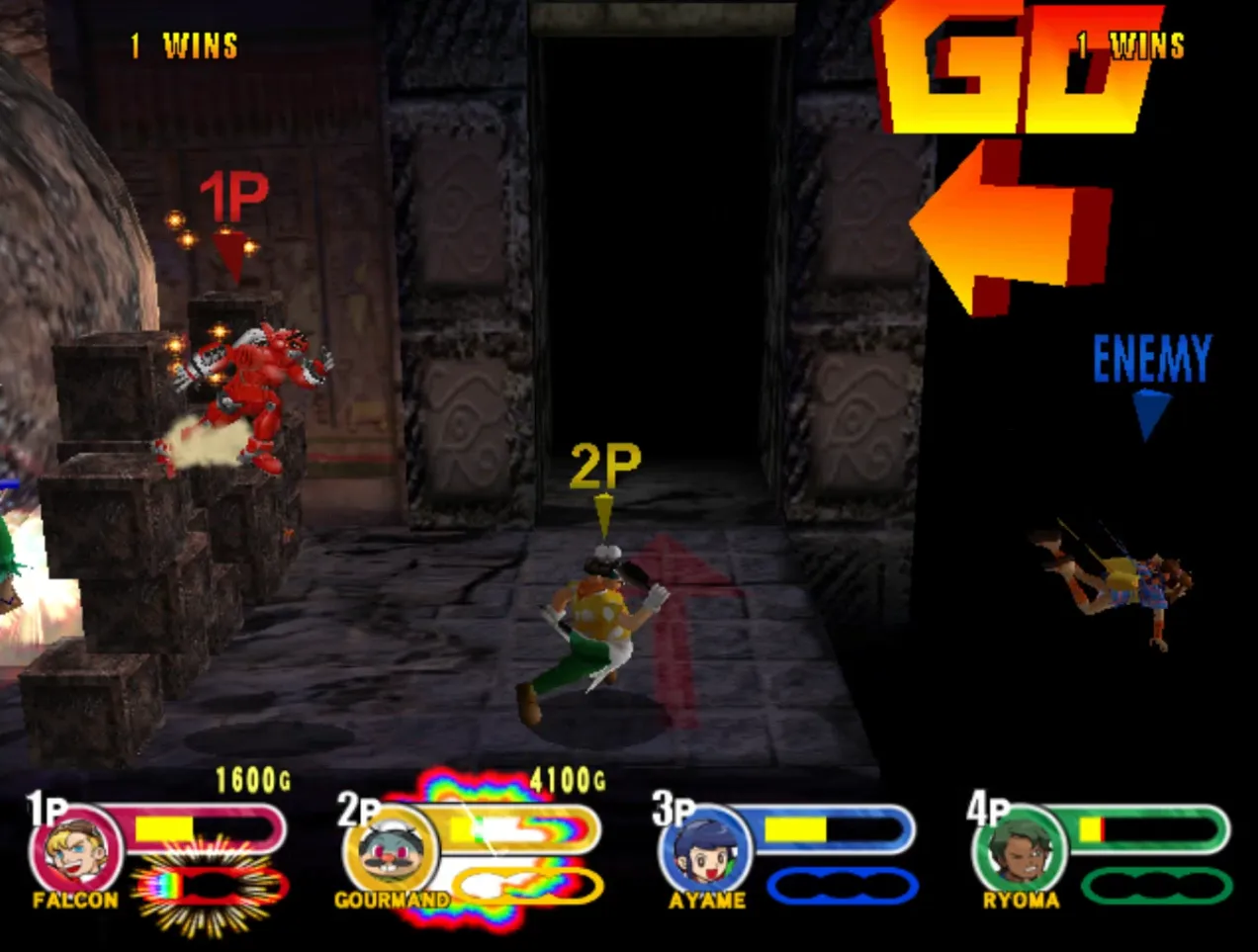
The adjustments made for this make sense to make this easier to pick-up-and-play for complete beginners though, with the dedicated button to grab items making it more deliberate to grab and drop stuff (including other players, amusingly enough), having a double jump, using the supers don't have recovery at the end so you can get away quick instead of being forced to get punished if the other player is nearby and not down to hit you back with a combo (but you CAN get interrupted during the start of the super animation as it doesn't freeze everything), and using one while your bar is mostly full still leaves you a bit of meter to stay in that form instead of instantly depleting.
The original characters are as recognizable as ever, and there are six new characters joining the cars (two of them are unlockable: Falcon's father named Pride, and shopkeeper Mel which normally only appears as the shop owner in the Dreamcast/PSP port). The Pharaoh Walker boss isn't complicated but you shouldn't sleep on it until you have chipped all its health if you are alone, and the final boss, the giant Dr. Erode, can be kind of annoying between having to go through a hallway of dummies until reaching him, having to jump on his hands to attack his face or rely on the Power Stones to transform and use attacks that can hit him easier.
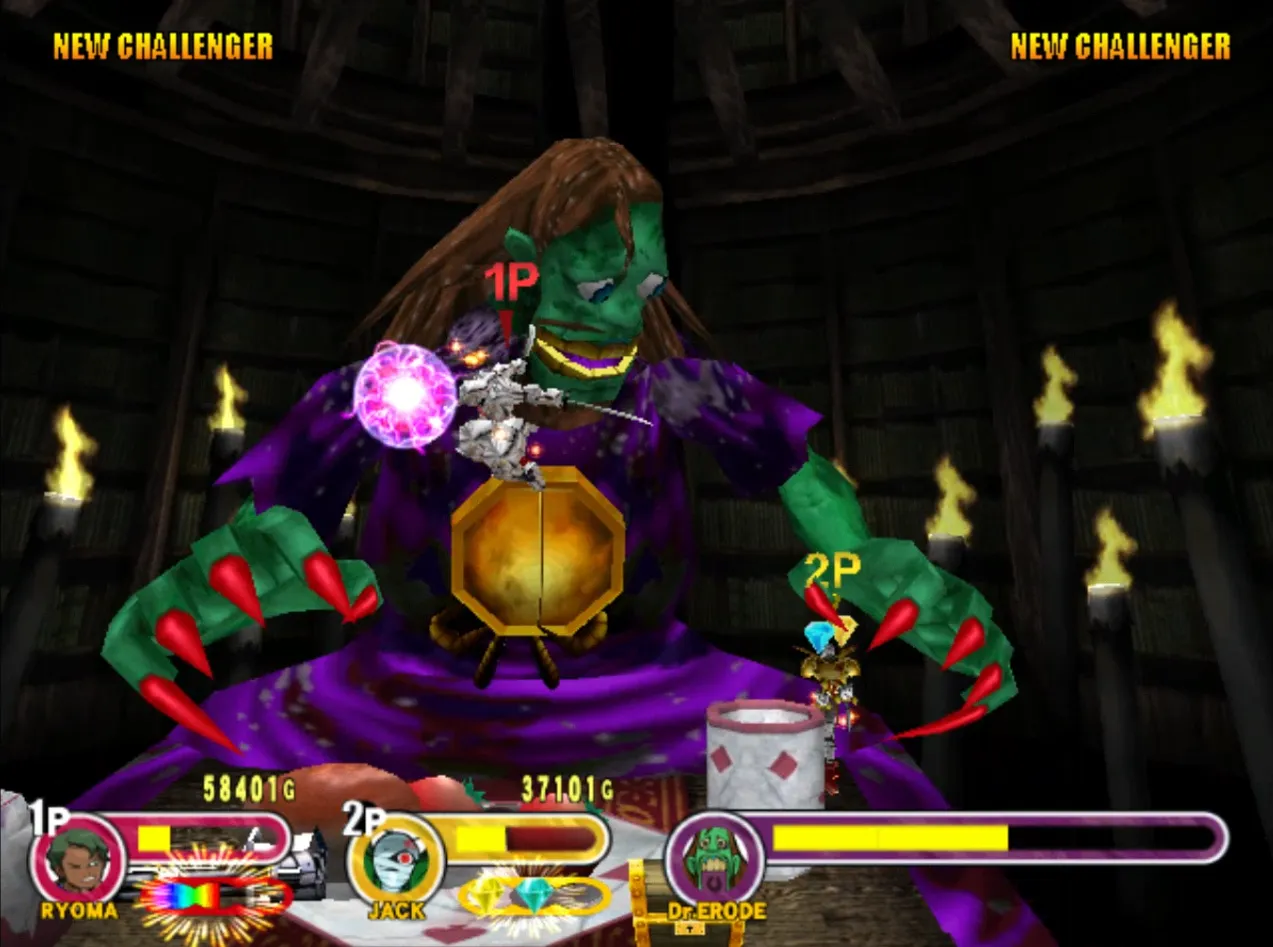
Oh, and I almost forgot that: Since there are four players now, there are more than 3 Power Stones on the game by default. So this can result in two players transformed and causing havoc on the field, as well as allowing for these two players in the final stretch to beat up together the last monster. Regardless of whether you are playing alone, co-op or versus with others, you can also now opt to revive a downed player with a sliver of health if 10 seconds haven't passed yet (for those of you thinking Call of Duty Zombies...yes, it is like that)
I will admit that I do miss the music that kicked in when transformed that emphasized your extra boost of power and that the original cast also lost one of their two unique attacks while transformed, but at least the music thing makes sense if now two players can be transformed at the same time.
So...is this a downgrade?
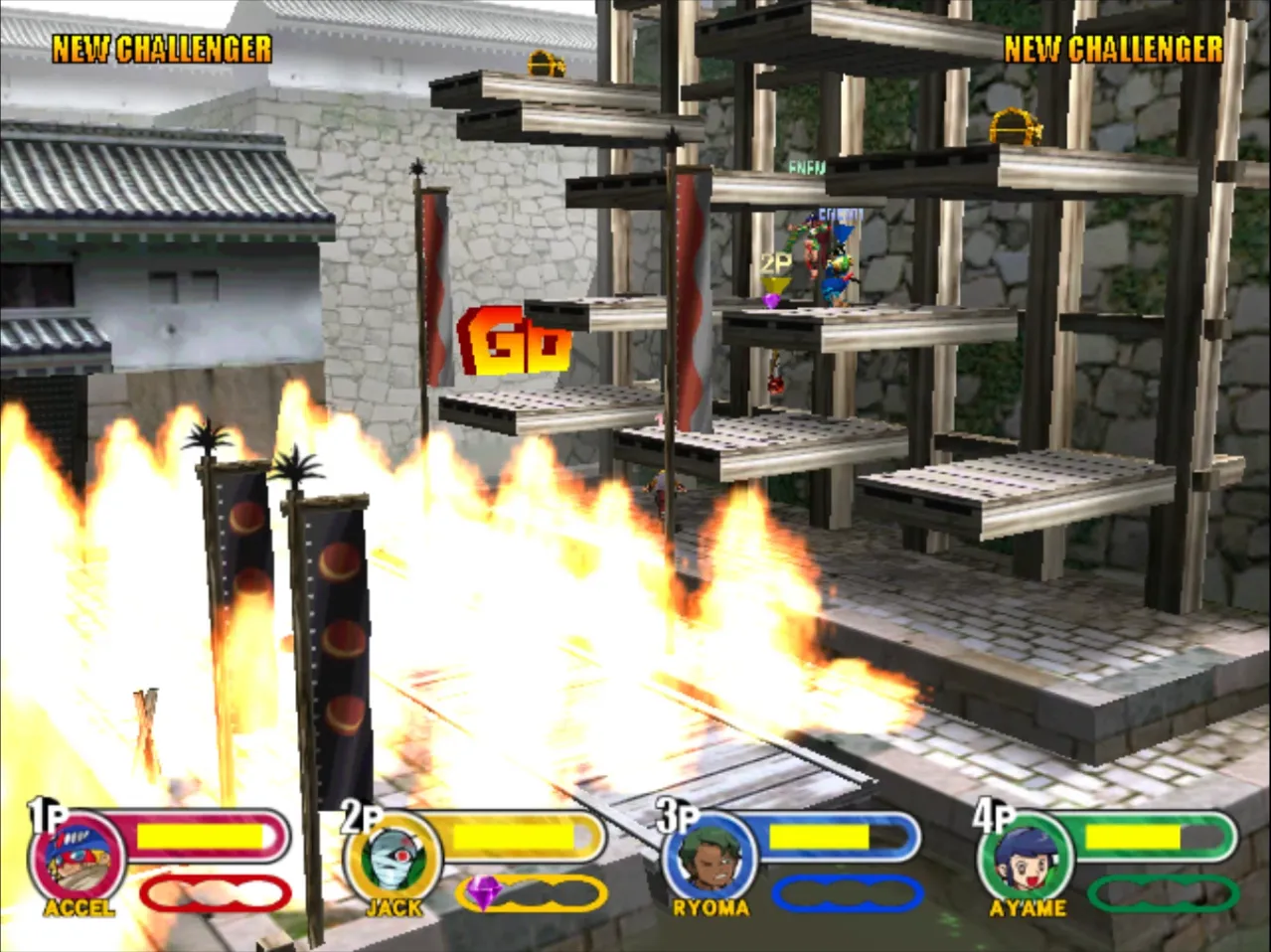
The thing with this game in particular is that due to the brief Arcade mode (which itself isn't that brief compared to other fighting games's arcade modes, but the low amount of fights can make you feel like it is) and today's landscape where there are so many other party games that might make this seem not as chaotic enough to attract players, it might sound like this sequel doesn't have much to offer today...
But I'll admit that in my initial revisit, it seemed that the only thing there was to do in two players was to go through the arcade mode run whether we wanted to fight each other or not, which had originally write this with a bit more disappointment than what I remembered from my memories of this game from playing this years ago with friends...but that was because I had revisited it on the Arcade Version.
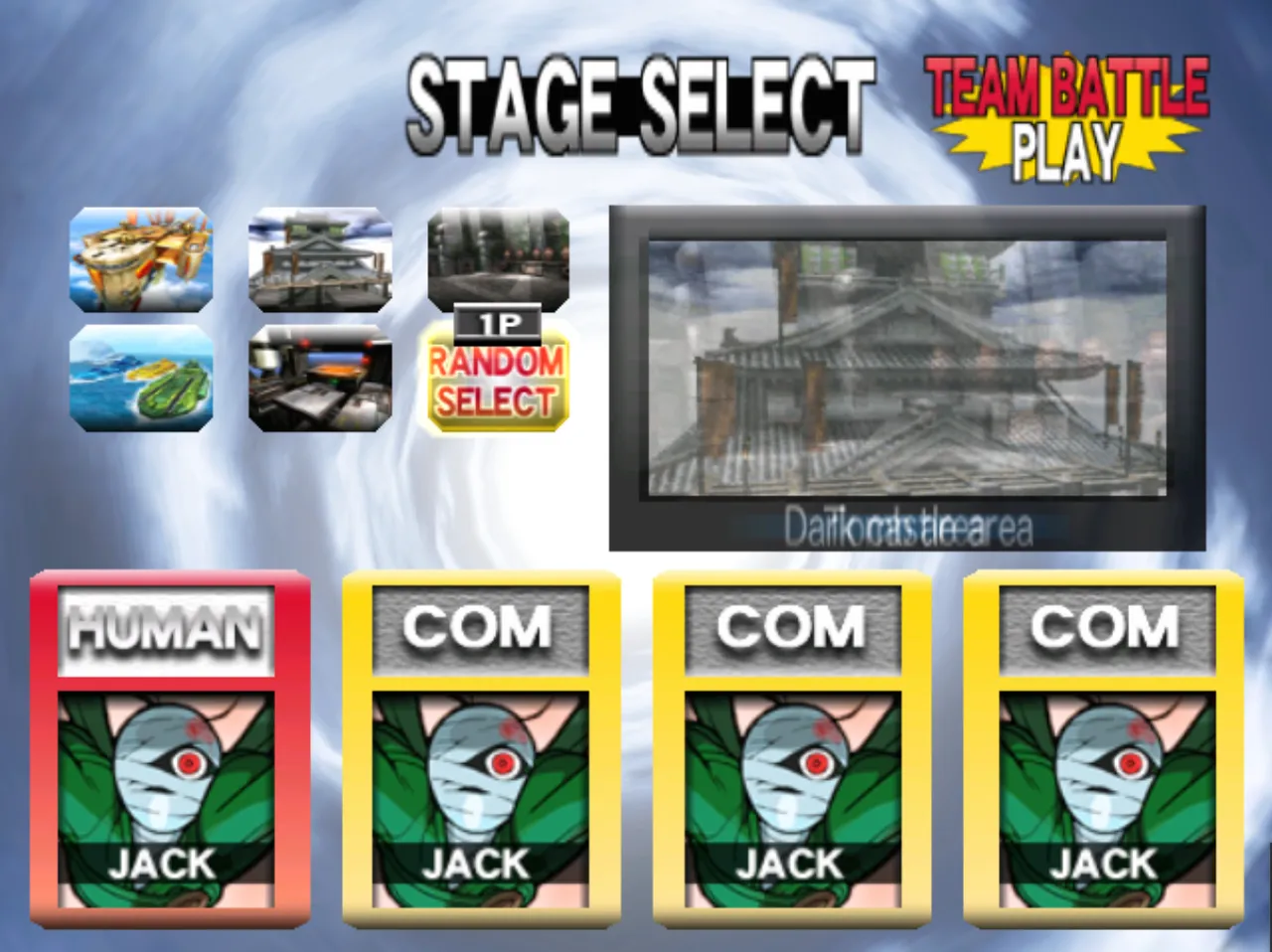
Since the Dreamcast and PSP versions aren't restrained to work exclusively through a coin-op to play, you can choose to play the stages you want with the extra items you unlock, whether it is one-versus-one, a battle royale...or even play with teams if you wish to go 2v2 or 1v3! The first mode highlighted by default happens to be 1-on-1 as well instead of the original Arcade mode, which can be finished faster since you only got to defeat one character in the three normal fights you play.
I think that this is a game that can still be worth playing in the extra single player modes from the home version to find new items, but specially if you are playing the home ports that allow you to play 1-on-1 with a pal and focus away from skill into who can get the funniest weapon to defeat the other and who doesn't get left behind on the stages (because who doesn't like to get a friend to mess around at least once in PokéFloats? 😂), a funny type of chaos that the first game doesn't give you...and boy I can see this game being a recipe for laughter if you can get the ball rolling as the devs intended with a full four-player grid of buddies ready.
Conclusion
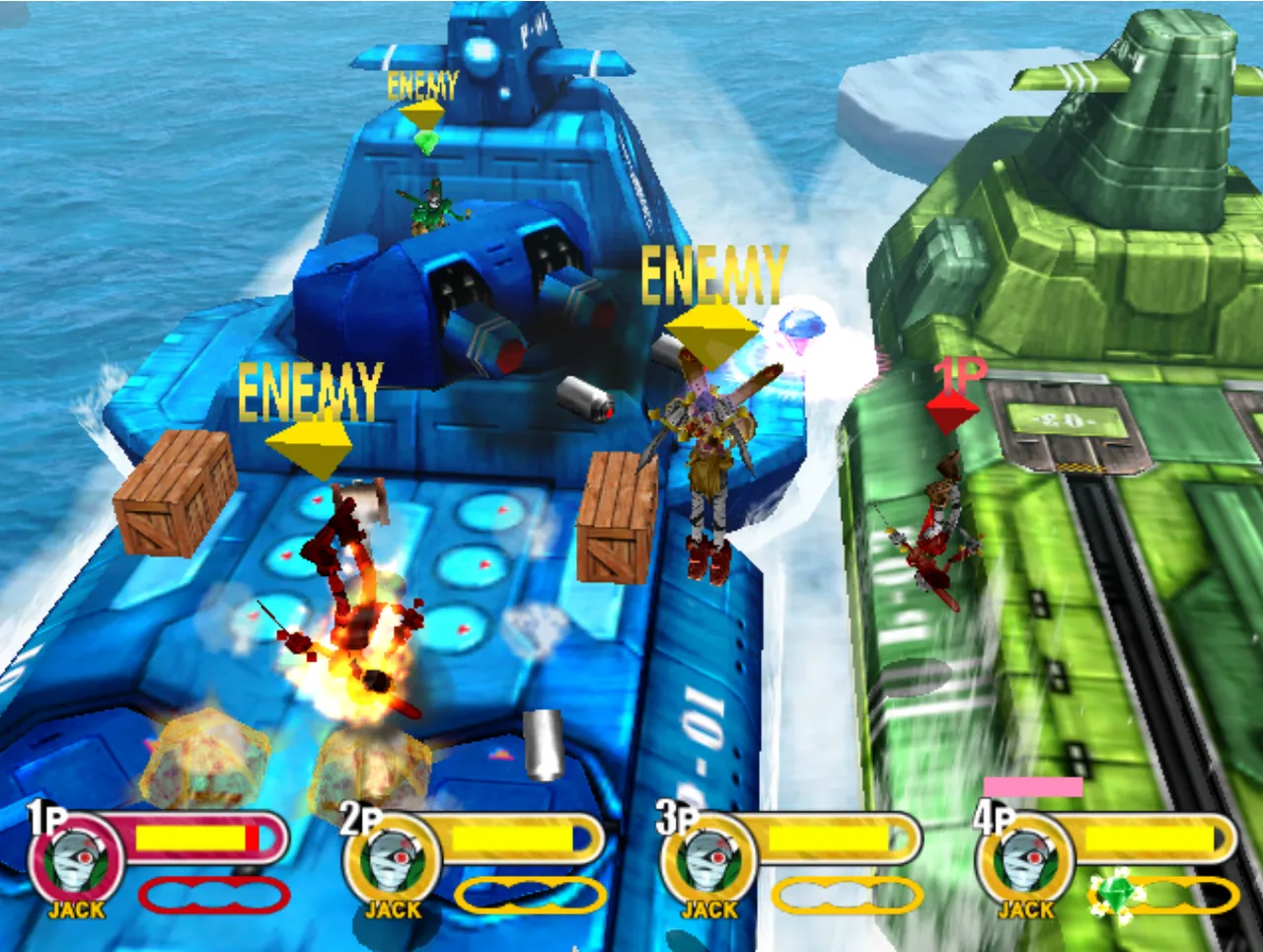
You know, while the original Power Stone is able to work very well as a standalone arcade game that you can pop-in and duel others with like any other fighting game, this one's strength definitely lies in playing the home version to be able to play with much more flexibility in your overall options, as well as having the shop to buy items (and mix them into new ones...if you can figure out which one works with what) and being more convenient to play versus mode with overall.
So for this game, emulating the Dreamcast version is an absolute no-brainer if you ever want to check this one out. A solid game to play on your own for some minutes if want something brief but creative, and definitely one that is worth trying to get others to play with you.
Thanks for reading!

Spanish translation with DeepL. All screenshots were captured by myself.
Español
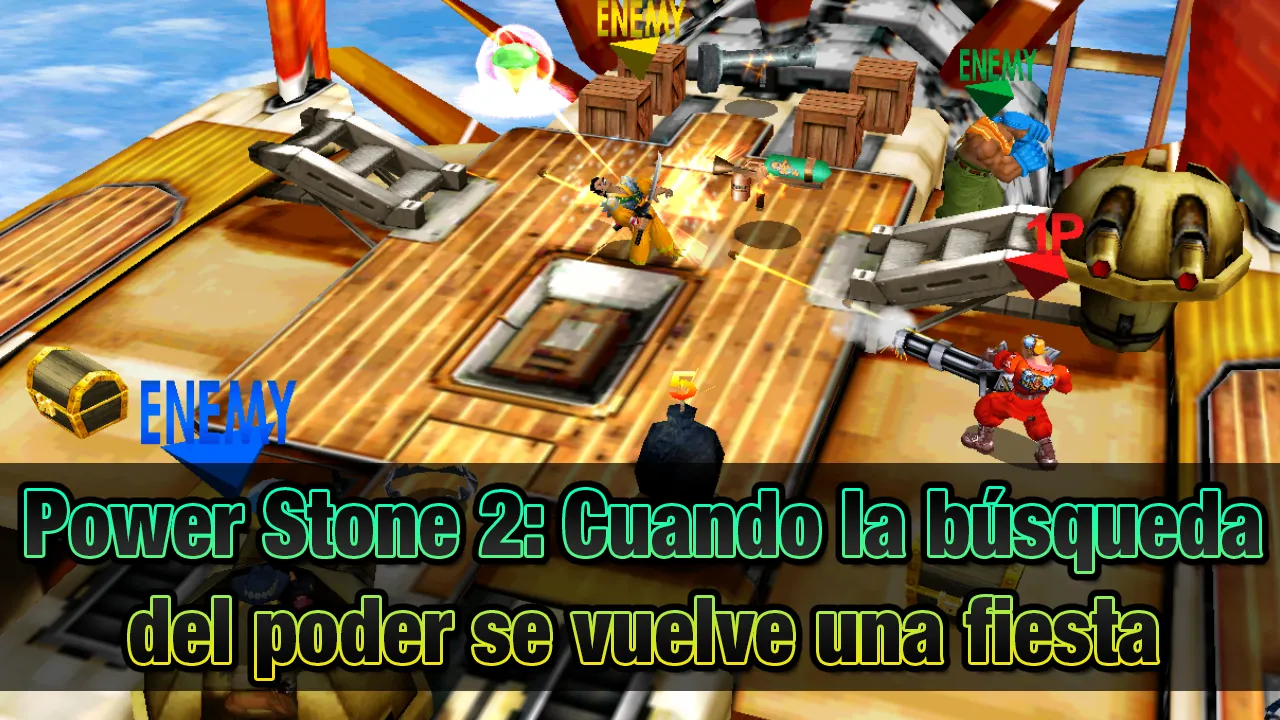
Anteriormente, en mi reseña original de Power Stone...
Y siempre que pueda probarlo con amigos, hablaré de Power Stone 2, que sí admite cuatro jugadores y, en general, se inclina más hacia ese caos que cabría esperar de él, pero tiene algunas cosas que se sienten mermadas debido a los compromisos que se han hecho para ello si se compara con éste.
Bueno, aún no lo he probado con otros TRES amigos... pero un día que tuve la oportunidad de probarlo con otra persona después de tanto tiempo, lo aproveché y jugué todo el juego con él en cooperativo.
Ah sí, ahora se puede jugar en co-op. Pronto verás cómo funciona.
Dos sobrevivirán, dos caerán

En el modo Arcade, tanto si juegas solo como si juegas con un jugador más, solo dos personajes podrán avanzar, así que es una lucha por intentar derrotar a los otros dos antes de que te derroten a ti... y si te acompaña un amigo, espera que ninguno de los dos muera al mismo tiempo, o que uno de vosotros muera mientras uno de los bots ya ha caído, ya que eso terminará inmediatamente la partida.
Tanto si te ves obligado a luchar con una IA como si tu amigo sigue vivo contigo, pasarás por un total de 5 fases: Dos combates normales, una pelea con el Faraón Caminante, otro combate normal, y luego el camino hacia el jefe final responsable del castillo flotante en el que estás atascado actualmente.
Puede que no parezca la cosa más larga, pero aún así puede llevar unos 15 minutos hacerlo todo si no has perdido ni una vez, lo que al menos da una vuelta rápida de diversión para recorrer en solitario o con un amigo.
Y ahora es el momento de hablar del elefante en la habitación.
O el Faraón Caminante, si lo deseas.

Combate mezclado con una fórmula party
Mientras que Power Stone 1 se centraba en las pequeñas fases y en la fluidez de los controles, que hacían que jugar con alguien de tu mismo nivel fuera bastante ingenioso, así como en el hecho de que cada personaje tuviera su propio escenario para añadir personalidad, Power Stone 2 sacrifica la complejidad y la individualidad para hacer cosas más grandes que se adapten a la adición titular de un modo versus para 4 jugadores.
Los escenarios ahora tienden a desplazarse a través de varias fases y transformaciones en lugar de un único escenario estático, tu botón de patada ahora actúa como un simple ataque de derribo o como botón para coger objetos si hay alguno cerca, y la alocada patada en picado que podía derribar con un solo golpe se ha sustituido por un pisotón hacia abajo que puede aplastar a un jugador... pero que obviamente no tiene tanto alcance como esa patada en picado.
Ahora tienes que moverte para coger armas poderosas, saltar a las torretas y, en general, tener que huir de los obstáculos que pueden aparecer al moverte a otra zona, lo que recuerda más a escenarios divertidos como Poké Floats y Mute City en Super Smash Bros Melee, y el zoom de la cámara para cubrir los grandes escenarios para la locura de cuatro jugadores puede hacer que la partida sea divertidísima con todo el equipo. Pero al igual que en los escenarios de Melee, algunos preferirían no tener mapas con trucos o zonas cambiantes, y en ese caso preferirían jugar con el Power Stone original, que no simplificaba la posibilidad de hacer combos con los botones.

Los ajustes que se han hecho tienen sentido para que sea más fácil de aprender y jugar para los principiantes, ya que el botón dedicado a agarrar objetos hace que sea más intencionado agarrar y soltar cosas (incluyendo a otros jugadores, por divertido que parezca), además de tener un doble salto, el uso de los supers no tiene recuperación al final, por lo que puedes huir rápidamente en lugar de verte obligado a ser castigado si el otro jugador está cerca y no puede devolverte el golpe con un combo (pero PUEDES ser interrumpido durante el inicio de la animación del super, ya que no lo congela todo), y usar uno mientras tu barra está casi llena te deja un poco de medidor para permanecer en esa forma en lugar de agotarse instantáneamente.
Los personajes originales son tan reconocibles como siempre, y hay seis nuevos personajes que se unen a los coches (dos de ellos son desbloqueables: El padre de Falcon, llamado Pride, y el tendero Mel, que normalmente sólo aparece como dueño de la tienda en el port de Dreamcast/PSP). El jefe Faraón Caminante no es complicado, pero no deberías dormirte sobre él hasta haberle quitado toda la salud si estás solo, y el jefe final, el gigante Dr. Erode, puede ser algo molesto entre tener que atravesar un pasillo de muñecos hasta llegar a él, tener que saltar sobre sus manos para atacarle a la cara o confiar en las Piedras de Poder para transformarte y usar ataques que puedan golpearle más fácilmente.

Ah, y casi lo olvido: Como ahora hay cuatro jugadores, hay más de 3 Power Stones en el juego por defecto. Así que esto puede dar lugar a que dos jugadores se transformen y causen estragos en el campo, además de permitir que estos dos jugadores en la recta final golpeen juntos al último monstruo. Independientemente de si juegas solo, en cooperativo o en versus con otros, ahora también puedes optar por revivir a un jugador abatido con una pizca de salud si aún no han pasado 10 segundos (para los que estéis pensando en Call of Duty Zombies... sí, es así).
Admitiré que echo de menos la música que sonaba cuando te transformabas y que enfatizaba tu aumento extra de poder, y que el elenco original también perdía uno de sus dos ataques únicos cuando se transformaba, pero al menos lo de la música tiene sentido si ahora dos jugadores pueden transformarse al mismo tiempo.
Entonces... ¿esto es un downgrade?

La cosa con este juego en particular es que debido al breve modo Arcade (que en sí no es tan breve comparado con los modos arcade de otros juegos de lucha, pero la baja cantidad de combates puede hacerte sentir que lo es) y el panorama actual donde hay tantos otros party games que pueden hacer que este no parezca tan caótico como para atraer a los jugadores, podría sonar como que esta secuela no tiene mucho que ofrecer hoy en día...
Pero admitiré que en mi revisita inicial, parecía que lo único que había que hacer en dos jugadores era recorrer la carrera del modo arcade tanto si queríamos luchar entre nosotros como si no, lo que hizo que al principio escribiera esto con un poco más de decepción de lo que recordaba de mis recuerdos de este juego de cuando lo jugué hace años con amigos... pero eso era porque lo había revisitado en la versión arcade.

Dado que las versiones de Dreamcast y PSP no están limitadas a funcionar exclusivamente a través de una moneda para jugar, puedes elegir jugar las fases que quieras con los objetos extra que desbloquees, ya sea uno contra uno, un battle royale... ¡o incluso jugar con equipos si quieres ir 2v2 o 1v3! El primer modo destacado por defecto resulta ser también 1 contra 1 en lugar del modo Arcade original, que se puede terminar más rápido ya que solo tienes que derrotar a un personaje en los tres combates normales que juegas.
Creo que es un juego que aún puede merecer la pena jugar en los modos extra para un jugador de la versión doméstica para encontrar nuevos objetos, pero especialmente si juegas a los ports domésticos que te permiten jugar 1 contra 1 con un amigo y dejar de centrarte en la habilidad para ver quién consigue el arma más divertida para derrotar al otro y quién no se queda atrás en los escenarios (porque ¿a quién no le gusta que un amigo la líe al menos una vez en PokéFloats? 😂), un tipo de caos divertido que el primer juego no te da... y vaya que puedo ver este juego siendo una receta para la risa si puedes hacer rodar la bola como los devs pretenden con una cuadrícula completa de cuatro jugadores de amigos listos.
Conclusión

Aunque el Power Stone original funciona muy bien como juego arcade independiente en el que puedes entrar y batirte en duelo con otros jugadores como en cualquier otro juego de lucha, el punto fuerte de este juego reside sin duda en la versión doméstica para poder jugar con mucha más flexibilidad en tus opciones generales, además de tener la tienda para comprar objetos (y mezclarlos con otros nuevos... si sabes cuál funciona con qué) y ser más cómodo para jugar al modo versus en general.
Así que para este juego, emular la versión de Dreamcast es una obviedad absoluta si alguna vez quieres echarle un vistazo. Un juego sólido para jugar solo durante unos minutos si quieres algo breve pero creativo, y definitivamente uno que merece la pena intentar que otros jueguen contigo.
¡Muchas gracias por leer!

Traducción al español hecha con DeepL. Todas las fotos capturadas por mí.